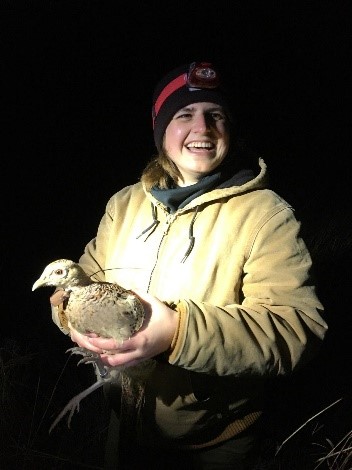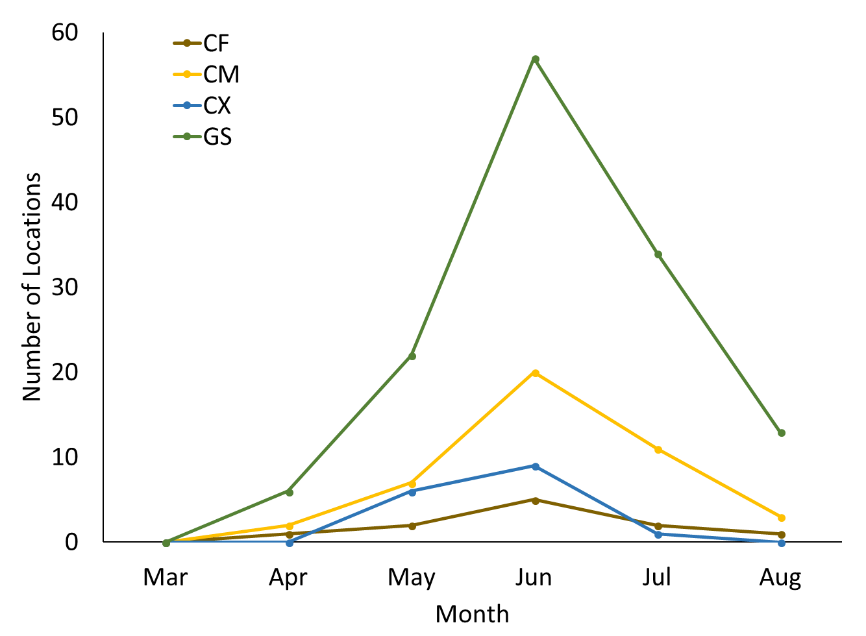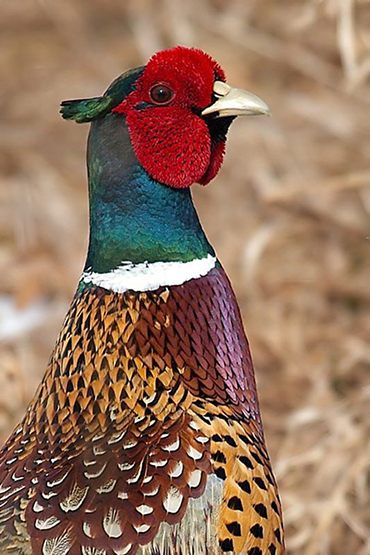Ring-necked Pheasant Population and Space Use Response to Landscapes Including Spring Cover Crops
Investigators:
Alixandra Godar, Ph.D. student
Project Supervisors:
Dr. David Haukos
Funding:
Kansas Department of Wildlife,
Parks and Tourism
Cooperators:
Kansas Department of Wildlife
Parks and Tourism
Location:
Graham, Norton and Russell
counties, Kansas
Completion:
August 2020
Status:
Completed
Objectives:
Test the potential influence of cover crops on ring-necked pheasant population demography, create an integrated population model that includes an effect of cover crops and other scenarios of landscape composition and configuration, and develop spatial models predicting potential effects of cover crop presence on pheasant abundance at the landscape scale
Assess relationships among availability of invertebrates among cover crop seed mixes, chick foraging space use and forage choice, and the potential invertebrate community in the landscape
Assess selection of cover crops and other available landscape patches by pheasants during multiple ecological states and at different spatial scales
Compare characteristics (e.g., vegetation cover, nutrient availability) among different spring cover crop types relative to potential benefits for wildlife and producer
Progress and Results:
Historically, ring-necked pheasant (Phasianus colchicus) populations fluctuate with land use practices, though the mechanisms are poorly understood. A current shift towards cover crops may alter the landscape enough to influence pheasant populations. Cover crops are planted between cash crops as an alternative to chemical fallow, where herbicide prevents plant growth until the field is planted again. Depending on the plant species, or species used, agricultural producers can improve their soil health by reducing erosion, increasing organic matter, fixing nitrogen, and reducing soil compaction. Spring cover crops are planted in March or April and chemically terminated in June or July in compliance with crop insurance requirements. From late May through August, cover crops can provide a variety of benefits for wildlife, primarily additional cover and food resources. Depending on the timing of pheasants nesting and brood rearing, cover crops may provide additional resources during critical times for reproduction. Working with private landowners, we divided fields into 4 treatments during 2017 and 2018, including a chemical fallow control and 3 different spring cover crops blends. Our cover crop mixes included Chick Magnet (a warm-season, broad-leafed forb mix designed for precocial chicks), GreenSpring (an agricultural forage mix with cool-season peas and oats), and a Custom Mix (designed to be adaptive with ten species). We captured pheasants in nearby Conservation Reserve Program areas using nightlighting and outfitted hens with 15-g necklace style radio-transmitters. We monitored hen movements and cover crop growth. Our preliminary results show pheasant use of cover crops peaks in June and continues even after termination (Fig. 1). Pheasants used GreenSpring most during 2017. Use may have been due to the close proximity of GreenSpring to the CRP fields of capture or due to the characteristics of GreenSpring, which provided the most visual obstruction, vegetative cover, and light blocked of the treatments. Pheasants select for grassland over cover crops across the entirety of the breeding season. Future research will develop an integrated population model combining spring crow counts with adult, nest, and brood survival. The model will also include how the presence of spring cover crops on the landscape influences adult and brood survival rates. Habitat selection will be combined with resource selection functions to assess what vegetative properties pheasants are selecting for and which cover crop blend provides the selected for characteristics. The final analyses will allow managers to make recommendations of the amount and type of cover crops to plant across the landscape.

Figure 1. The number of hen locations within each treatment type (CF=Chemical Fallow, CM=Chick Magnet, CX=Custom Mix, GS=GreenSpring) across the breeding season.

Products:
Professional Presentations:
Godar, A., A. Annis, D. Haukos, and J. Prendergast. 2018. Can you find pheasants in spring cover crops? Kansas Natural Resources Conference, Manhattan, Kansas.
Godar, A., A. Annis, D. Haukos, and J. Prendergast. 2018. Cover crops: Altering an altered landscape to benefit wildlife? Annual Meeting of the Central Mountains and Plains Section of The Wildlife Society, Kearney, Nebraska.
Godar, A., A. Annis, D. Haukos, and J. Prendergast. 2018. Do pheasants use spring cover crops? Midwest Fish and Wildlife Conference, Milwaukee, Wisconsin.
Godar, A., A. Annis, D. Haukos, and J. Prendergast. 2018. Pheasant habitat selection: logical or mysterious. Annual Meeting of The Wildlife Society, Cleveland, Ohio.
Godar, A., A.C. Annis, D. Haukos, and J. Prendergast. 2017. Ring-necked pheasant use of spring cover crops in western Kansas. Annual conference of The Wildlife Society, Albuquerque, NM.